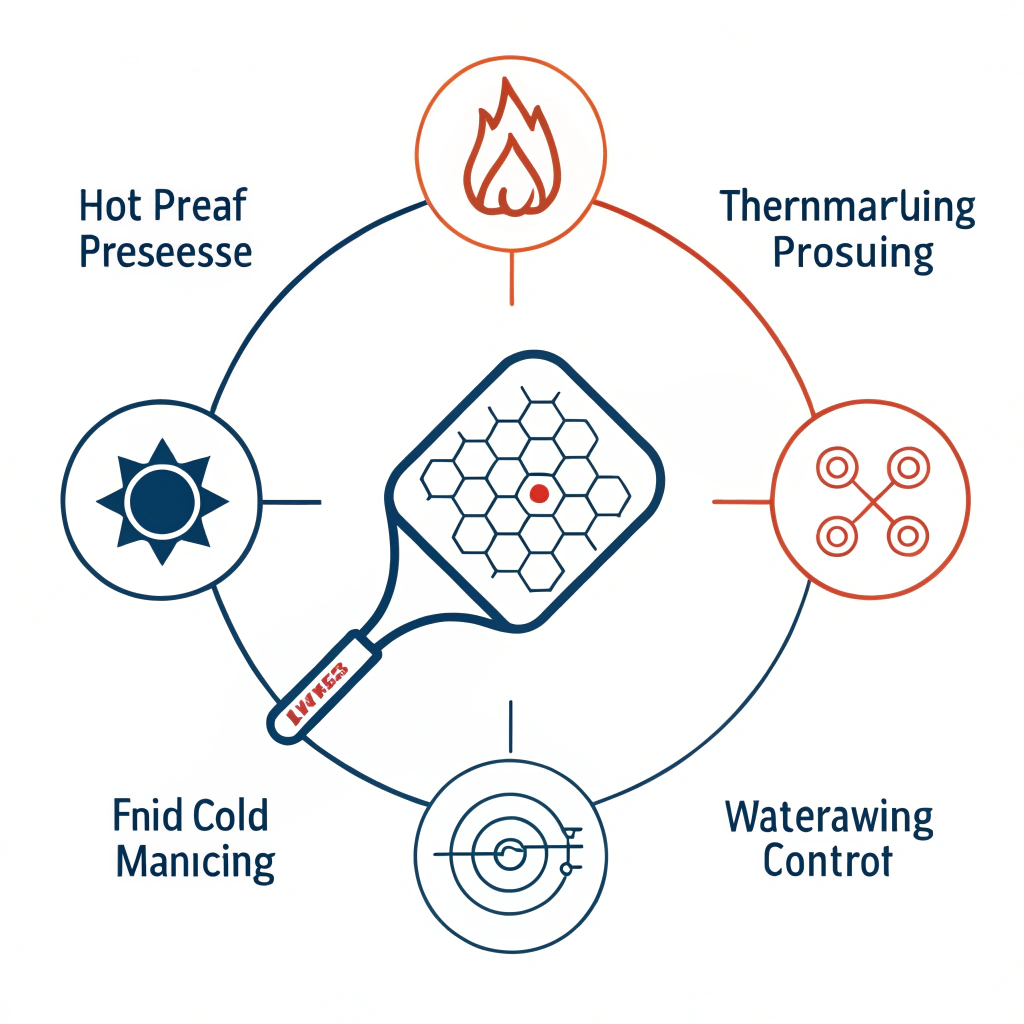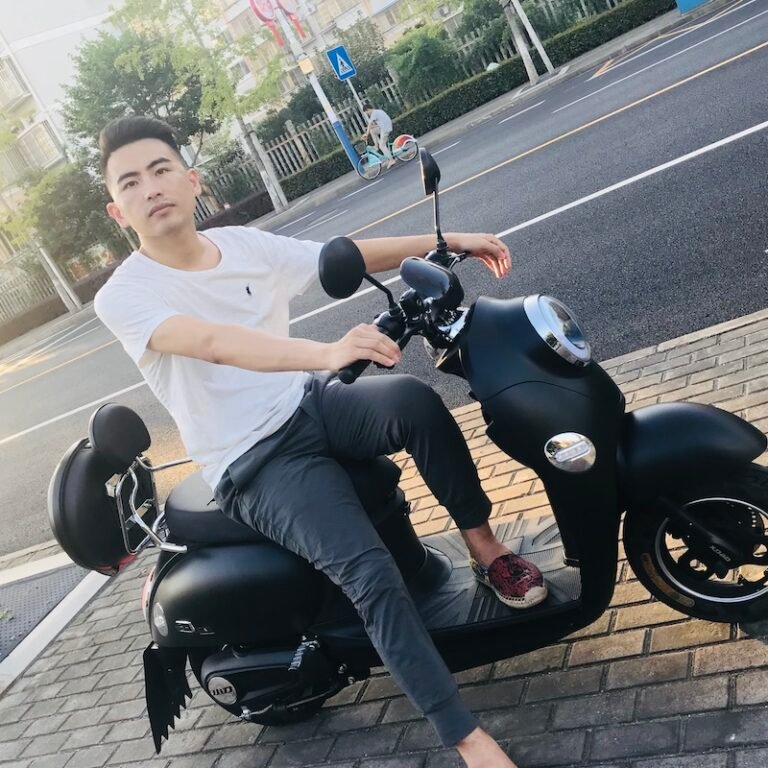High-performance pickleball paddles come to life through a blend of advanced production techniques, rigorous quality control, and expert craftsmanship. In our deep dive below, we explain the key manufacturing processes involved—from hot pressing1 to cold pressing2 and thermoforming3—and show how these methods contribute to optimal durability, control, and performance in every paddle.
In today’s competitive sports equipment market, procurement managers and operations directors face critical decisions when selecting manufacturing partners. At NEX Pickleball, our commitment to operational transparency4 and manufacturing excellence stands out. We understand that every manufacturing method not only defines the paddle’s performance but also reflects the efficiency, consistency, and innovation of the production facility.
Our discussion begins with a clear explanation of the challenges that have long affected paddle manufacturing. Traditionally, manufacturing often focused solely on mass production, sometimes sacrificing material integrity and precision. However, modern production processes must address multiple facets such as:
• Maintaining structural integrity while optimizing weight distribution
• Preserving the innate properties of premium materials like carbon fiber and fiberglass
• Achieving high production efficiency without compromising on quality
• Customizing paddle design to meet individual needs of professional and recreational players
Understanding these challenges is vital to appreciating the benefits of techniques such as hot pressing, cold pressing, and thermoforming.
One of our strengths at NEX Pickleball is our diversified approach to manufacturing. We employ three primary production processes, each with distinct advantages and trade-offs. Below is a detailed look at each method along with a table summarizing their key features.
Hot pressing involves the simultaneous application of heat and pressure to shape materials into a paddle. This technique is particularly efficient for large-scale manufacturing and is renowned for producing paddles with exceptional impact resistance.
Key advantages include:
• High production efficiency, enabling fast turnaround times
• Enhanced structural integrity, critical for withstanding repeated impacts
• Improved durability that makes the paddle suitable for high-performance use
However, the process has its limitations:
• The inherent heat may alter some material properties, thus potentially affecting the paddle’s "feel"
• Investment in specialized equipment increases initial production costs
At NEX Pickleball, we mitigate these challenges by fine-tuning our hot pressing parameters and conducting rigorous quality control tests after each press cycle. This ensures that every paddle retains the intended material properties while delivering superior power and control.
Unlike hot pressing, cold pressing shapes paddle materials at or near room temperature through mechanical pressure. This process allows a higher degree of control over the paddle’s thickness and structural composition, as it preserves the original characteristics of the base materials.
Advantages of cold pressing include:
• Superior control over paddle structure, enabling precise thickness and geometry
• Preservation of the original material integrity, leading to enhanced ball feel and responsiveness
• Better suitability for designs that demand nuanced performance differences
The primary drawback of cold pressing is that production cycles tend to be longer compared to hot pressing, potentially impacting overall efficiency. For this reason, our production schedule integrates cold pressing for specialty models where control is prioritized over speed.
Thermoforming is used when paddle designs require complex shapes or intricate material distributions. By heating the paddle material to a softening point and then forming it with precise molds, we can achieve designs that are truly unique while maintaining the paddle's stability and performance.
Key benefits of thermoforming include:
• The ability to create intricately designed paddles with well-distributed material properties
• Enhanced structural stability, which contributes to consistent performance during play
• Ideal for both premium and custom paddle lines, where detailed design is a must
The trade-offs include a longer production time and higher equipment costs. Despite these challenges, the ability to deliver custom-made paddles with excellent performance makes thermoforming an indispensable process in our production lineup.
To help procurement managers and decision-makers better understand the production choices, here’s a table summarizing the main features of each technique:
| Process | Key Advantages | Limitations | Best Use Cases |
|---|---|---|---|
| Hot Pressing | High efficiency; excellent impact resistance; strength | Potential material alteration; high equipment cost | Mass production; competitive play paddles |
| Cold Pressing | Precise control; preserves inherent material properties | Longer production cycles; sensitive to pressure control | Specialty paddles; enhanced ball feel models |
| Thermoforming | Intricate designs; precise material distribution; stability | Longer production time; higher production cost | Premium, custom-made paddles |
This table underscores how each process fits different operational needs and quality requirements. At NEX Pickleball, we strategically employ all three methods, ensuring that our product range meets the diverse requirements of a global clientele.
In addition to production processes, the choice of materials substantially influences paddle performance. Our manufacturing goes beyond processing techniques to include careful selection of premium materials.
• 3K Carbon Fiber: Offers strength and flexibility; excellent rebound force while reducing vibration.
• 12K Carbon Fiber: Provides a smoother surface with higher thread density, ideal for competitive play with its superior hardness and durability.
• T300 Carbon Fiber: Known for its outstanding tensile strength and balanced performance, making it excellent for both power and lightweight constructions.
• E-Glass Fiberglass: Excellent elasticity and tensile strength, crucial for those seeking a balanced mix of control and power.
• Composite Materials5: Combining carbon fiber and fiberglass or integrating bamboo core composites and honeycomb cores, we create paddles that offer unmatched balance and performance.
The right material selection can influence control, power, and even the tactile feel of the paddle, and we ensure every material is processed through our optimized production methods for best results.
Quality control is at the heart of our operations. Each paddle undergoes rigorous testing to ensure it meets our high standards—testing that evaluates strength, flexibility, impact resistance, and precise material distribution. By integrating our production techniques with tight quality control measures, we can guarantee every paddle performs consistently at the highest levels.
For clients with specialized needs, we offer custom production options. Customers can specify design preferences, weight distribution, balance, and even grip sizes. This flexibility not only enhances user satisfaction but also supports retail and team branding requirements. Customization highlights our operational transparency, as every step from design to final production is carefully documented and monitored.
While our advanced processes ensure high-quality output, the manufacturing environment always brings its own set of challenges:
• Maintaining consistency across high-volume production runs
• Balancing production efficiency with customization demands
• Ensuring that each paddle’s “feel” is preserved even as we apply different processing methods
NEX Pickleball continuously invests in state-of-the-art equipment and skilled personnel. We adopt a robust quality management system that monitors every aspect of production from raw material selection to final quality testing. These strategies have helped us achieve a track record of reliability that enhances our reputation among global distributors and sports equipment firms.
Additionally, our modular production approach allows us to adapt quickly to market demands. Whether expanding our product line or fine-tuning performance features, we have the agility needed to stay competitive in a rapidly evolving environment.
B2B purchasers increasingly value operational transparency when choosing manufacturing partners. Detailed insights into production processes not only build confidence but also foster collaborative innovation. With our detailed documentation and proven expertise, procurement managers can make informed decisions based on clear performance metrics and production methods.
For sports equipment distribution firms, understanding production techniques means reduced risks, improved product reliability, and the potential for better market responsiveness. Our open-book approach to quality control, production efficiencies, and bespoke manufacturing solutions makes us a preferred partner for companies looking to enhance their product offerings with premium pickleball paddles.
In summary, high-performance pickleball paddle manufacturing is a meticulous process that blends advanced production techniques with careful material selection and rigorous quality control. The combination of hot pressing, cold pressing, and thermoforming enables us to tailor each product to the specific needs of our clients – whether mass-produced for global distribution or custom-made for elite play.
For procurement managers and operations directors, assessing a factory's production efficiency and technological innovation is crucial. At NEX Pickleball, our operational transparency and commitment to continuous improvement empower our client partners to make informed decisions that drive competitive advantage in the market.
If you are exploring new production partnerships or wish to upgrade your supply chain with reliable, high-performance products, consider NEX Pickleball. Our deep expertise and innovative production processes ensure that every paddle not only meets industry standards but sets new benchmarks for performance and durability. We invite you to reach out for detailed discussions on custom specifications, production timelines, and quality assurance methodologies.
Take the next step towards enhancing your product line by partnering with a manufacturer that prioritizes innovation, precision, and quality at every process stage.
People Also Ask
Q: What are the main production processes in pickleball paddle manufacturing?
A: The main production processes include hot pressing, cold pressing, and thermoforming. Hot pressing efficiently produces high-strength paddles, cold pressing ensures precision and material integrity, and thermoforming allows for complex, custom designs.
Q: How does material selection influence paddle performance?
A: Material selection influences paddle performance by determining the balance between strength, flexibility, and control. For example, various types of carbon fiber (3K, 12K, T300) offer different levels of rebound force and durability, while composite materials and fiberglass provide a balance of power and control.
Q: How do manufacturing techniques affect the overall quality of a pickleball paddle?
A: Manufacturing techniques greatly affect quality by impacting material distribution, structural integrity, and tactile feel. Each technique—hot pressing, cold pressing, and thermoforming—offers unique benefits that contribute to durability, performance consistency, and customization potential.
-
hot pressing: Read this article to learn how the integration of heat and pressure in hot pressing can optimize production efficiency and enhance the durability of high-performance products. [back] ↩
-
cold pressing: Read this article to understand how cold pressing maintains material integrity and allows for precise control over product thickness and structural composition. [back] ↩
-
thermoforming: Read this article to explore how thermoforming enables the creation of complex, custom designs by using controlled heating and molding techniques. [back] ↩
-
operational transparency: Read this article to discover the importance of clear production processes and open documentation for building trust and ensuring consistent quality in B2B manufacturing partnerships. [back] ↩
-
Composite Materials: Read this article to learn more about the advantages of integrating various fibers and materials, such as carbon fiber and fiberglass, to achieve optimal balance, strength, and performance in manufacturing. [back] ↩







